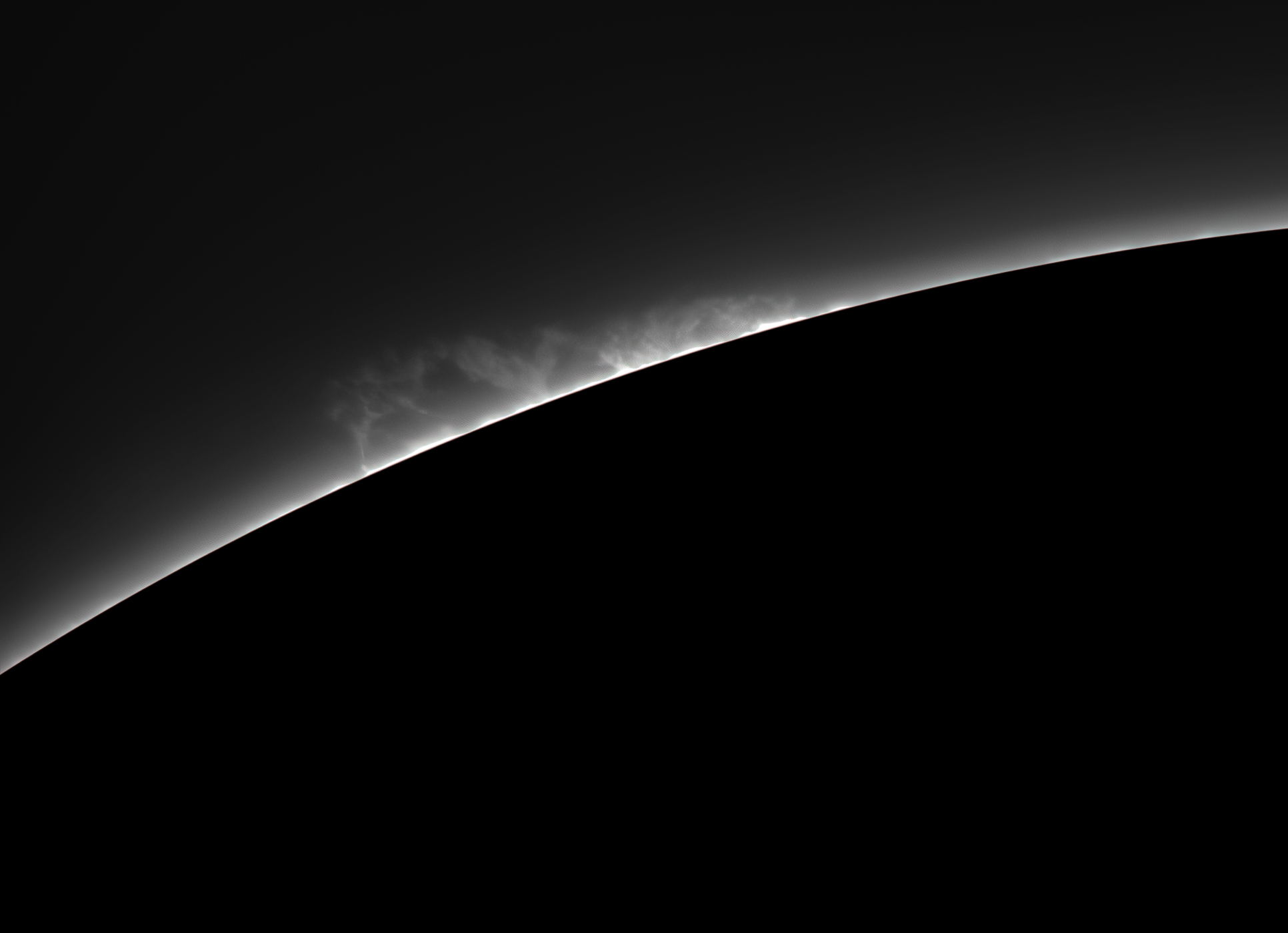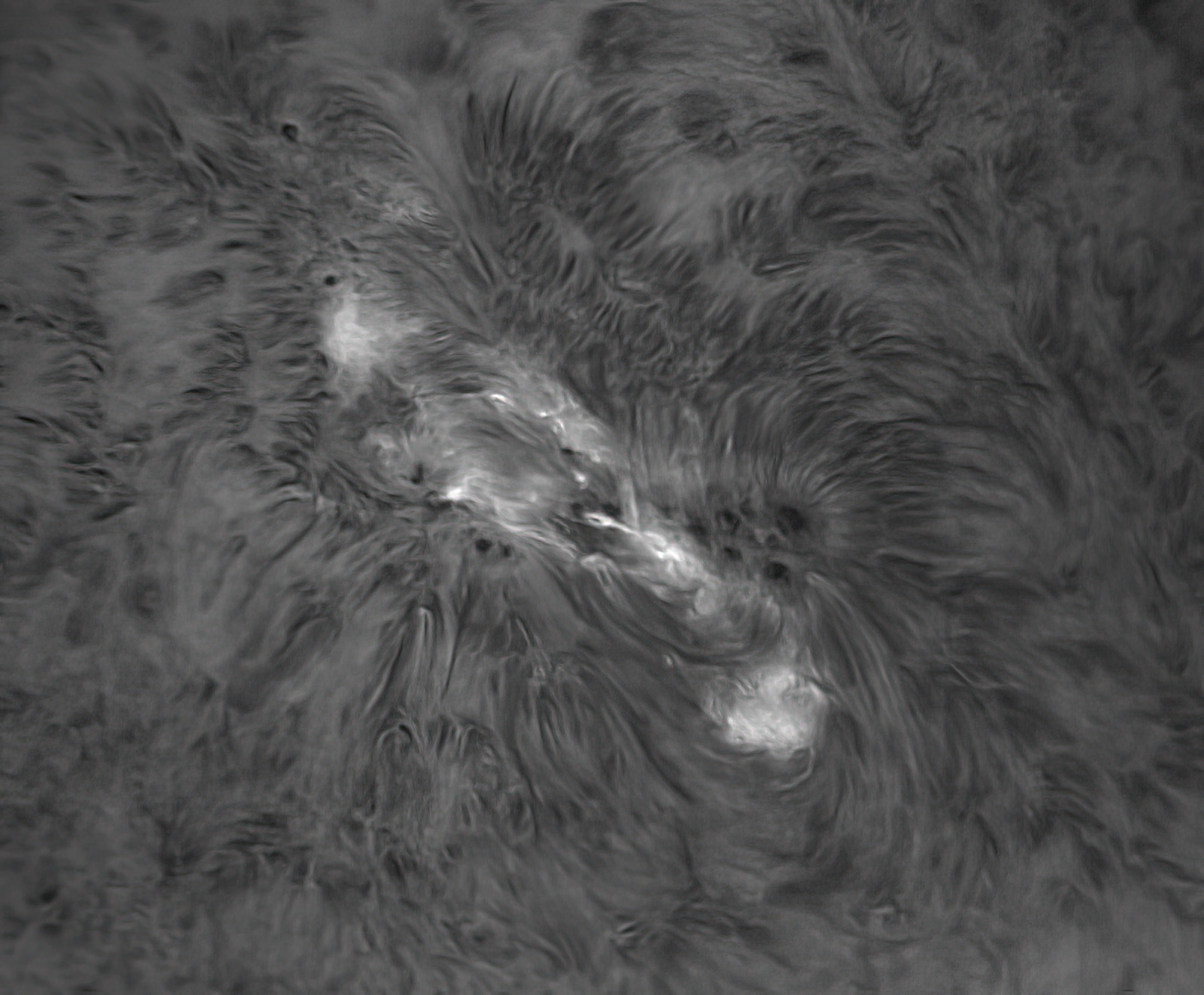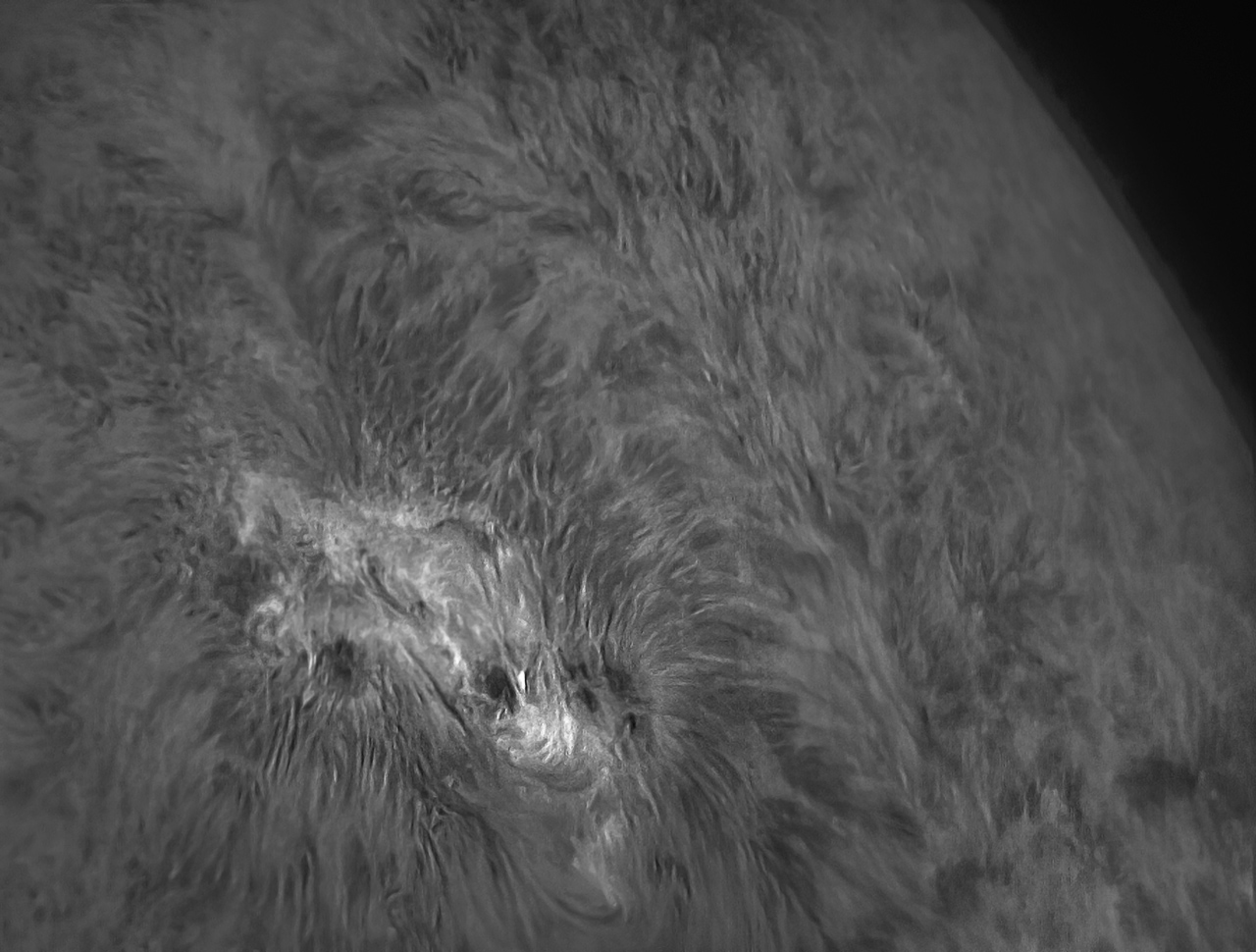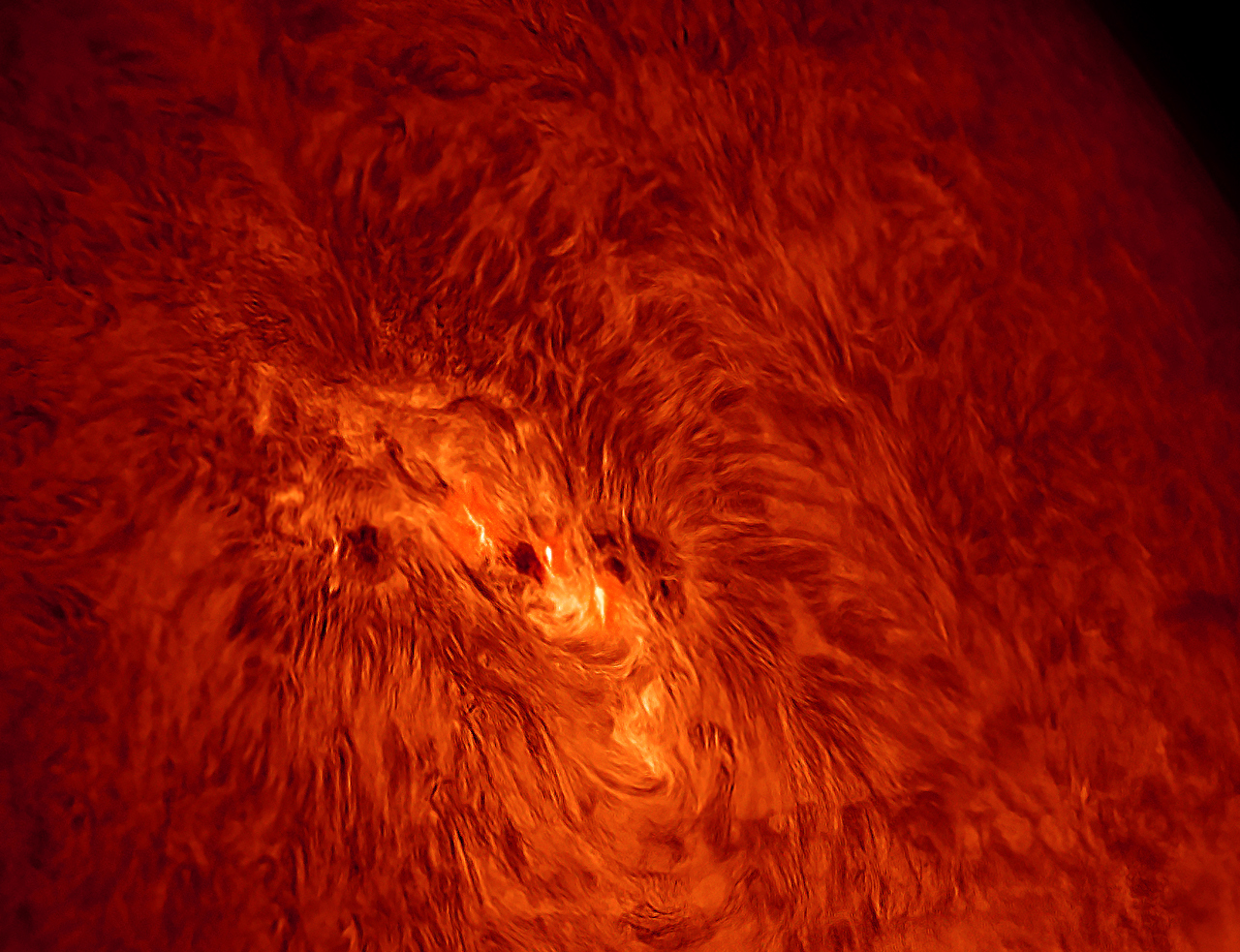Above the Quiet Sun
08/27/2021. Keeping an eye on our local star.

8/29/2021.

A hedgerow prominence coming around the limb.

This is the Sun's most active region for the last 24-36 hours cooling down after a series of C-, M-, and almost-M class flares. There's a C-3 flare winding down as you see it. I got there just in time to catch it --trees, clouds-- but this photo, a few minutes past peak is sharper; it looks good big, btw. This is the best 100 out of 1,000 frames in really fast turbulence (exposures were 500 microseconds at gain 60). All the brightest flares were out of view from my longitude, but hope springs eternal. There's also talk about whether it will throw an X-class flare sometime soon. For this reason, I've set up the solar 'scope in the backyard instead of in the community lot -- I can leave everything ready to record in case it lights up.
8/20/2021. This lovely active region approaches the limb. Better hurry up if we're going to get an X-flare from it:

Color-mapped for sport and drama:

9/3/2021. I've gone back and forth for a few days about whether my solar imaging would benefit from adopting a Daystar Quark to replace my Lunt / Frankenscope kit. I'd like to use more aperture; I'd like a larger area of good filtration; I'd like more even filtration. They're hard to find new, but Highpoint Scientific appeared to be an attractive source because they invite used gear to resell (also because I bought my RC and the Lunt from them ages ago). So I inquired about trading up, but my 2010 hardware was said to be "too old" (it's a good damn thing I didn't want to trade an Alvan Clark). They suggested, probably correctly, that it would move on Astromart. ICStars has Quarks in stock, but when you come right down to it, I'm not at all sure that a Quark would do what I want, And then there are the QC issues I read about which Daystar doesn't so much deny as explain as due to natural variations given the vagaries of mica and the constraints of the Quark's aggressive consumer pricepoint (Quarks are said to be built to Daystar's "SE" standards, but if they miss a little, they miss, and the Quark etalon is smaller, etc; meanwhile actual SE filters are 4x as expensive). Smart money says to buy used from someone with photos through the filter on the block.
So rather than entering the Quark lottery, I'll try upping my processing game (for sure) and making some less drastic changes.
Change 1: faster camera. My older ASI120MM and ASI120 Mini run at about 13.7 fps with their USB 2 interfaces. On the kitchen counter, I tried the USB3 ASI1600MM with ASICap. Frame rates were just 14.9 at full rez, but that's a huge chip by comparison with scary data needs. By selecting ROIs (Regions of Interest) comparable to my current camera, I get frame rates of 50-80 fps. That's more like it (ASI's optimized plantary cameras run several times faster, but they're not free). I can do deeper stacks, or I can grab all data during better seeing, and I can shoot between the clouds. I could also do time-lapses practically, using, say, 100 frames per step. 9/08: Alas, in its first brief outing, the 1600MM hasn't come close to doing what the ASI120MM can do. Focus is soft. Speed is good. I tried a few different ROIs and defined a couple of new ones. Friday, under better skies, I'll take it to the community lot early in the day and take my time seeing what it can do. Today, the tree-free interval was only a few minutes long and clouds took most of that; rain was falling before I got it all shut down.
Change 2: The A-P mount should allow sharper results because precise focusing on the LXD-55 is tough. Just touching the knobs at the cropped, long EFL moves the image around like mad. It's not impossible, but it takes a lot of practice and concentration.
Change 3: As far as processing goes, I'll standardize on PixInsight. TopazAI is fine for a quick look, but I'm pretty sure I can get the same quality from PI with more control and without increasing the images' untrustworthiness coefficient.
So today's post-processing results still begin with AS!3 to turn AVIs into Tiffs. In PI, do a TGV noise reduction pass (default settings, 100 iterations), a histogram stretch, then a couple of L-R decon passes (~10 iterations times two, which is NOT the same as 20 iterations once), then more noise reduction and maybe a third L-R pass of fewer iterations at adjusted parms. The following deconvolution settings seem to work well for the first passes: Str 3, Shp 2 or 3, wavelet regularization, 2 layers (at default settings). But there are many levers to pull and buttons to push. This is just a start.
Look forward and back a couple of pages for side by side by side Topaz, Registax, and PixInsight treatments of the same data.
Next Change: Try real and synthetic flats early in the workflow. And let's return to Firecapture for taking data. I used an earlier version of it while starting out in solar imaging, and I like the user interface better than ASIcap's. There are new-to-me options I want to audition (flats and their real-time use, for example).